If you want to know about the European Climate Pact instead, click here.
What exactly are cost actions.
Since science has changed its nature by becoming more multidisciplinary, interconnected and data-based, cooperation has become crucial in the scientific field. COST allows scientists to be entirely in control of their innovation and research projects. Therefore, COST uses the bottom-up research and innovation method. COST encompasses researchers from different spheres, the private oneand the public, to work together by sharing their knowledge and resources.
That means that COST promotes the advancement of science with researchers coming from academia and the industry. While as the local governments make their contribution by guaranteeing national investments in technology and research by allowing the scientific and innovation projects to work at full potential. Indeed, the main operating instrument is COST Action – a scientific collaboration and national research funds complementation network.
The features of COST Action include collaborations in scientific and technological fields, involving at least seven COST members. Additionally, COST Actions are opened to innovators and researchers by furthermore including opened calls for proposals. A COST Action work programme usually lasts for four years.
In addition, a COST Action is open to everyone: scientific and technological areas that include inter and transdisciplinary fields and emerging fields. Moreover, a COST Action is also available to private and public institutions, such as academia, SME or industry, European and international organisations, and NGOs. Also, career stages of both types, inexperienced and experienced kinds, and of course to COST members.
ACS – ASOMI College of Sciences participates in the COST project, more specifically in European Network on International Student Mobility: Connecting Research and Practice.
Action description
The international student mobility (ISM) in higher education has expanded rapidly over the past decades. Therefore, interest in ISM is growing, involving different disciplines, research communities, and circles of practitioners and policymakers. However, there is still little connection and exchange among researchers across these spheres. In addition, ISM scholarships are strongly restricted to scientific fields. Thus, the Action at hand responds to the pressing need for systematic interdisciplinary and international exchange of theoretical frameworks. These frameworks include best practice examples, research methodologies, and findings. Additionally, the Action includes translationsof the scientific conclusions into recommendations for ISM. This Action is organisedaround five working groups. Four out of five groups are addressed in need of scientific development, and the fifth one connects practice to recommendations:
(1) Global ISM flows and trends at the macro-level;
(2) Social inequalities in access to and during ISM;
(3) The social and cultural integration of international students in their host countries;
(4) The impact of ISM on graduates’ careers;
(5) Connecting research and practice.
The Action connects established researchers, early-career investigators and PhD students. All these participants come from different scientific disciplines, research communities, and countrie. The Action also involves international student and study abroad organisations, various policy levels, and international offices.
The Action offers comparative and practical insights into ISM dynamics. To do it, the Action unites fragmented knowledge and generates new interdisciplinary and innovative perspectives translates them into recommendations for stakeholders.
ACS – ASOMI College of Sciences is a management committee member, including 60 academic and university organizations. The lead partner is Tilburg University in the Netherlands.
The networking tools used by COST Actions
In addition, a brief overview of networking tools used by COST Actions.
Researchers can use networking which constitutes the right way for broadening research horizons and making new connections.
COST Actions aim to maximise these interconnectivity and cooperation possibilities by giving the researchers and innovators a chance to use tools and additional activities by being beneficial to individual researchers, innovators, and broader groups. Among its devices, the networking method ameliorates research outcomes and reinforces the knowledge of the entire society.
The networking tools often use conferences, meetings, and workshops, and COST Action Management Committees usually organise meetings. These sessions may include the discussions dedicated to the proper COST Action Management Committees, conferences, seminars or working group meetings. They may also be meant for the wider community, informing people on COST Action’s deeds. COST will cover the meeting’s travel costs and fees.
COST also has the possibility of partaking in short-term scientific missions. Short-term scientific missions are exchange visits during which researchers and innovators can visit other locations within their Action. Thus, researchers or innovators have the possibility of spending up to six months in a laboratory or an institution elsewhere. In this way, researchers and innovators can share and gain skills among themselves.
The networking possibilities at COST Action also include training schools lasting for fifteen days. Each COST Action organises training. Moreover, there are conference grants for PhD students for inclusive target countries, enabling these students to participate in assignments not included in COST Actions.
COST Actions support communication and dissemination activities. More specifically, COST promotes sharing research outcomes with other researchers, NGOs, policymakers, and the private sector. COST Actions use new remote and virtual networking tools, and COST Actions provide a virtual networking support grant or, in other words, a Virtual Networking Support Manager. Moreover, the COST Actions virtual networking plan includes Virtual Mobility Grants, which strengthen the existing communities and allow the members to collaborate, learn new techniques, exchange experience and knowledge etcetera.
In other words.
In other words, COST Actions are pan-European, bottom-up and open-to-all scientific and technological research and innovation projects. COST Actions are opened to all; they include different scientific and technical research disciplines, a quality that makes them interdisciplinary.




